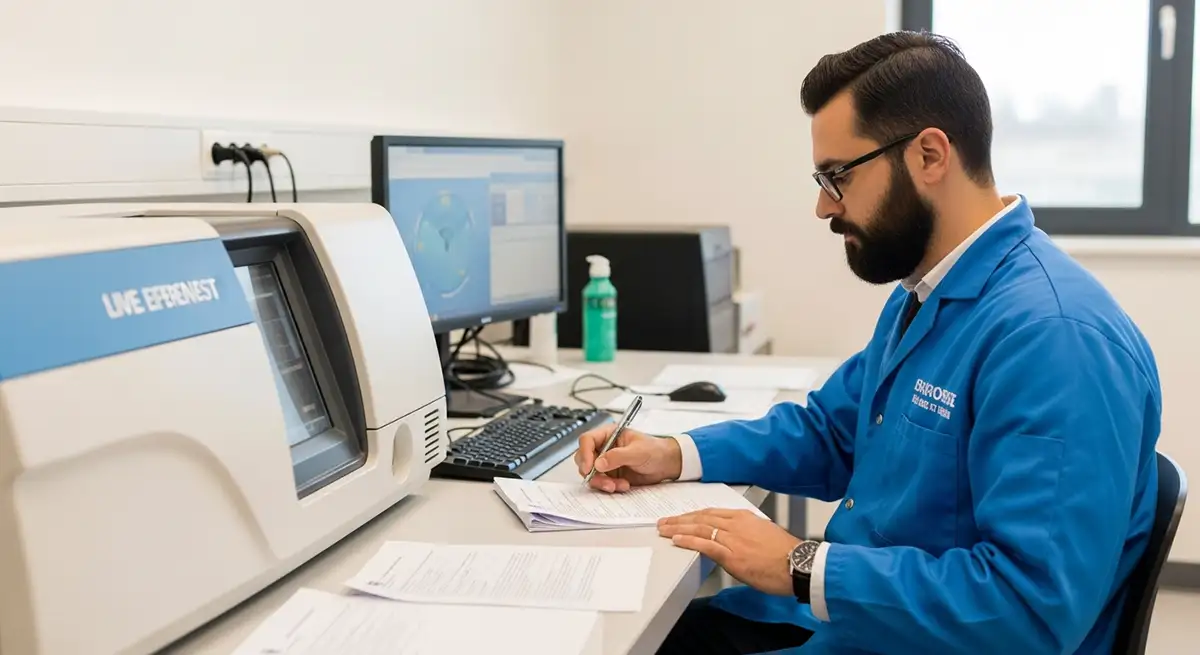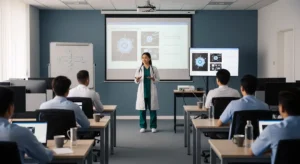
AI Paradox of Automation: Insights for 2025 and Beyond
Understanding the AI Paradox of Automation
What is the AI Paradox of Automation?
The AI paradox of automation refers to the complex relationship between automation technologies and human labor. While automation is designed to enhance efficiency, productivity, and accuracy, it can also lead to unintended consequences that may hinder these benefits. Essentially, the paradox lies in the fact that as organizations increasingly automate processes, they may inadvertently create a dependency on technologies that require human oversight and intervention, leading to a demand for new skills and capabilities among the workforce.
As automation technologies, such as artificial intelligence (AI), machine learning, and robotic process automation (RPA), continue to evolve, the challenge for businesses is to harness these tools effectively without diminishing the role of human intelligence and creativity. Understanding this paradox is crucial for organizations looking to implement AI-driven automation strategies while ensuring a balanced and effective collaboration between machines and humans.
Historical Context and Evolution of Automation
To appreciate the current landscape of the AI paradox of automation, we must first examine its historical context. The journey of automation began with the industrial revolution, where mechanization transformed manufacturing processes and increased output. Fast forward to the late 20th century, the advent of computers and software introduced a new wave of automation that revolutionized not only manufacturing but also service sectors such as finance, healthcare, and logistics.
In recent years, advancements in AI have taken automation to a new level, enabling machines to perform tasks that were once thought to be exclusive to human intelligence. This evolution has led to significant efficiency gains; however, it has also raised concerns about job displacement, skills gaps, and the need for ongoing workforce adaptation. Understanding the historical evolution of automation provides valuable insights into the current challenges and opportunities presented by the AI paradox of automation.
Benefits of the AI Paradox of Automation
Efficiency and Productivity Gains
Automation, driven by AI technologies, can lead to remarkable efficiency and productivity gains. By allowing machines to handle repetitive and mundane tasks, organizations can free up human employees to focus on higher-value activities, such as strategic planning, creative problem-solving, and relationship building. For instance, in manufacturing, AI-powered robots can work around the clock without fatigue, significantly increasing production rates while reducing errors.
Moreover, automation can lead to better resource allocation, as organizations can optimize workflows and reduce operational costs. This efficiency not only benefits the bottom line but also enhances customer satisfaction, as businesses can deliver products and services faster and with greater accuracy.
Enhancing Human Decision-Making
While automation may carry the risk of sidelining human labor, it also has the potential to enhance human decision-making significantly. AI systems can analyze vast amounts of data far more quickly than any human could, providing insights that inform strategic decisions. This capability enables organizations to act on real-time data and trends, leading to more informed and effective decision-making processes.
For example, in the healthcare sector, AI-driven analytics can help doctors make better diagnostic decisions by quickly processing patient data and identifying patterns that may not be immediately evident. This synergy between human expertise and AI capabilities exemplifies the potential benefits of the AI paradox of automation, where machines augment human skills rather than replace them.
Implementing the AI Paradox of Automation
Steps for Successful Implementation
To navigate the AI paradox of automation effectively, organizations must approach implementation strategically. The first step is to conduct a thorough assessment of existing processes to identify areas where automation can deliver the most value. This involves not only analyzing the tasks that can be automated but also understanding the impact on human roles and responsibilities.
Once potential processes have been identified, businesses should prioritize them based on factors such as return on investment, complexity, and alignment with organizational goals. A phased approach to implementation allows organizations to test and refine their automation strategies while minimizing disruptions to existing workflows.
Furthermore, it is essential to foster a culture of collaboration between humans and machines. Training employees to work alongside AI technologies and equipping them with the necessary skills will facilitate a smoother transition and help mitigate fears surrounding job displacement.
Identifying Suitable Processes for Automation
Identifying suitable processes for automation is a critical component of effective implementation. Organizations should focus on tasks that are repetitive, rule-based, and time-consuming, as these are often the most amenable to automation. Additionally, processes that require high levels of accuracy and consistency are ideal candidates for AI-driven automation.
However, it is equally important to consider the complexity of the tasks involved. Highly complex processes that require nuanced human judgment may not be suitable for full automation. Instead, businesses can leverage AI to assist human decision-making, allowing for a collaborative approach that maximizes the strengths of both humans and machines.
Best Practices for Navigating the AI Paradox of Automation
Balancing Human and Machine Collaboration
To effectively navigate the AI paradox of automation, organizations must prioritize the balance between human and machine collaboration. This involves recognizing the unique strengths of both parties and designing workflows that capitalize on these strengths. For instance, while AI excels at data processing and pattern recognition, humans bring creativity, empathy, and critical thinking to the table.
One best practice is to encourage open communication between teams involved in automation initiatives. By fostering a culture of collaboration and transparency, organizations can ensure that employees feel empowered and supported throughout the automation journey. This approach not only enhances buy-in but also encourages employees to share their insights on how automation can be leveraged to improve their work.
Continuous Learning and Adaptation Strategies
The rapid pace of technological change necessitates continuous learning and adaptation strategies. Organizations should invest in training and upskilling their workforce to ensure that employees are equipped with the skills needed to thrive in an automated environment. This includes not only technical skills related to AI and automation but also soft skills that enhance collaboration and problem-solving abilities.
Moreover, organizations should establish mechanisms for feedback and iteration. By regularly assessing the effectiveness of automated processes and gathering input from employees, businesses can identify areas for improvement and adapt their strategies accordingly. This commitment to continuous learning will enable organizations to stay ahead of the curve and fully leverage the benefits of the AI paradox of automation.
Real-World Examples of the AI Paradox of Automation
Case Studies in Various Industries
Across various industries, organizations are successfully navigating the AI paradox of automation to drive innovation and efficiency. For instance, in the retail sector, companies like Walmart have implemented AI-driven inventory management systems that automate stock replenishment based on real-time sales data. This not only improves inventory accuracy but also allows employees to focus on customer engagement and service.
In the financial services industry, banks are utilizing AI to automate routine transactions and enhance fraud detection. By automating these processes, financial institutions can reduce operational costs while simultaneously improving security and customer experience. These examples illustrate how organizations can capitalize on the AI paradox of automation to achieve tangible benefits.
Lessons Learned from Successful Implementations
Successful implementations of automation technologies often reveal valuable lessons that can inform future initiatives. One key takeaway is the importance of starting small and scaling gradually. Organizations that attempt to automate too many processes at once may face overwhelming challenges, leading to resistance among employees and potential disruptions to operations.
Additionally, it is crucial to involve employees in the automation process from the outset. By actively engaging teams in discussions about automation initiatives, organizations can foster a sense of ownership and collaboration that enhances the likelihood of successful implementation. This human-centered approach can mitigate fears surrounding job displacement and empower employees to embrace new technologies as tools for enhancing their work.
Future Insights: The AI Paradox of Automation in 2025 and Beyond
Emerging Trends and Technologies
As we look to the future, the AI paradox of automation is likely to evolve alongside emerging trends and technologies. One notable trend is the increasing integration of AI with other technologies, such as the Internet of Things (IoT) and blockchain. This convergence has the potential to create more sophisticated automation solutions that enhance operational efficiency and data security.
Moreover, advancements in natural language processing (NLP) are enabling machines to understand and respond to human language more effectively. This capability can lead to more intuitive human-machine interactions, further blurring the lines between human and machine roles in the workplace.
Preparing for the Future Workforce Dynamics
Preparing for the future workforce dynamics shaped by the AI paradox of automation requires a proactive approach. Organizations must anticipate the changing nature of work and invest in reskilling and upskilling initiatives to equip employees with the skills needed to thrive in an automated environment. This includes not only technical skills but also critical thinking, emotional intelligence, and adaptability.
Furthermore, businesses should prioritize diversity and inclusion in their workforce strategies. A diverse workforce brings varied perspectives and ideas that can drive innovation and creativity in automation initiatives. By fostering an inclusive culture, organizations can ensure that all employees feel valued and empowered to contribute to the automation journey.
In conclusion, the AI paradox of automation presents both challenges and opportunities for organizations. By understanding this paradox and implementing thoughtful strategies, businesses can harness the power of automation while enhancing human decision-making and collaboration. As we move toward 2025 and beyond, a commitment to continuous learning, adaptation, and inclusivity will be essential for navigating the evolving landscape of automation. To explore more about the AI future trends, visit our dedicated page here.







No comment yet, add your voice below!